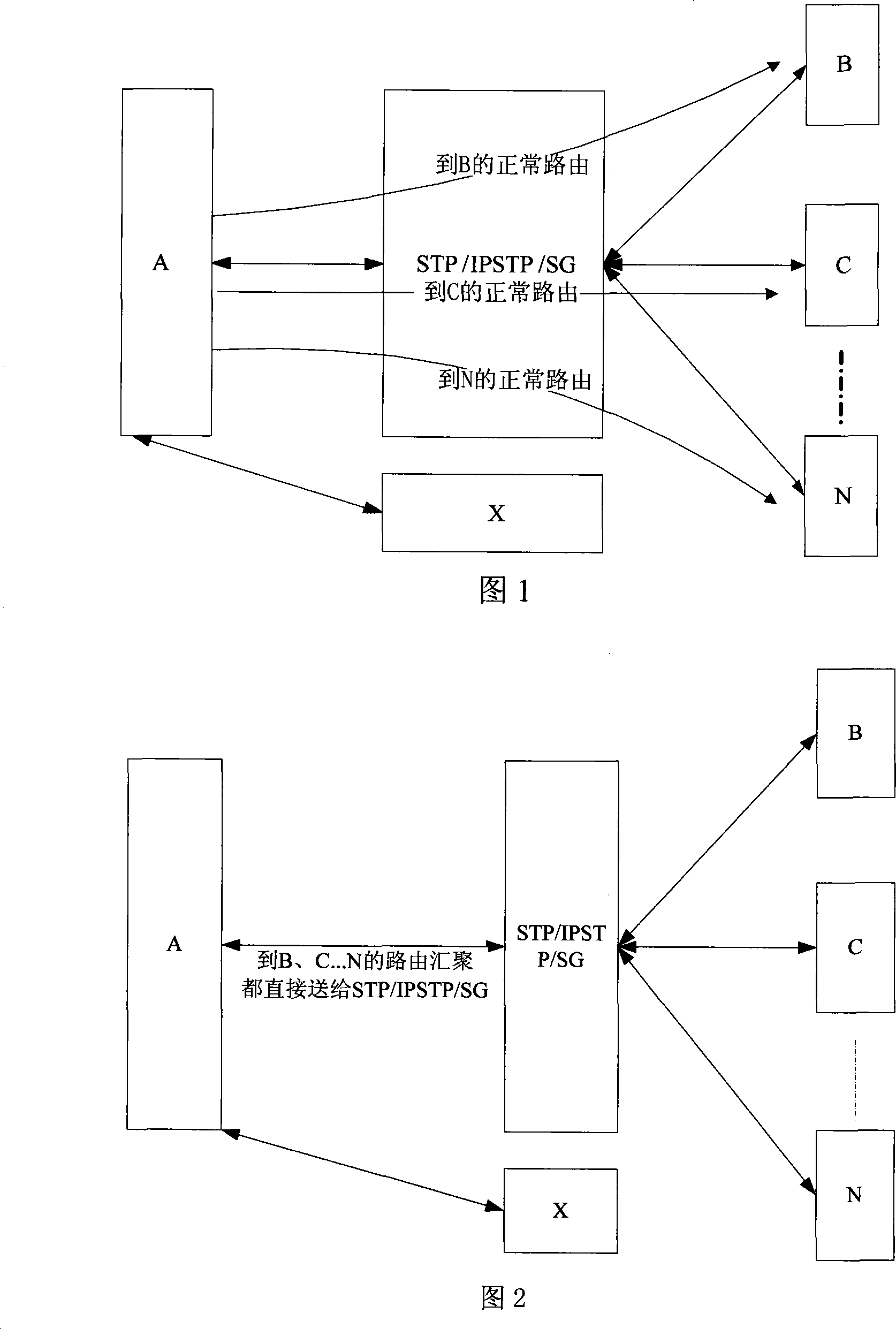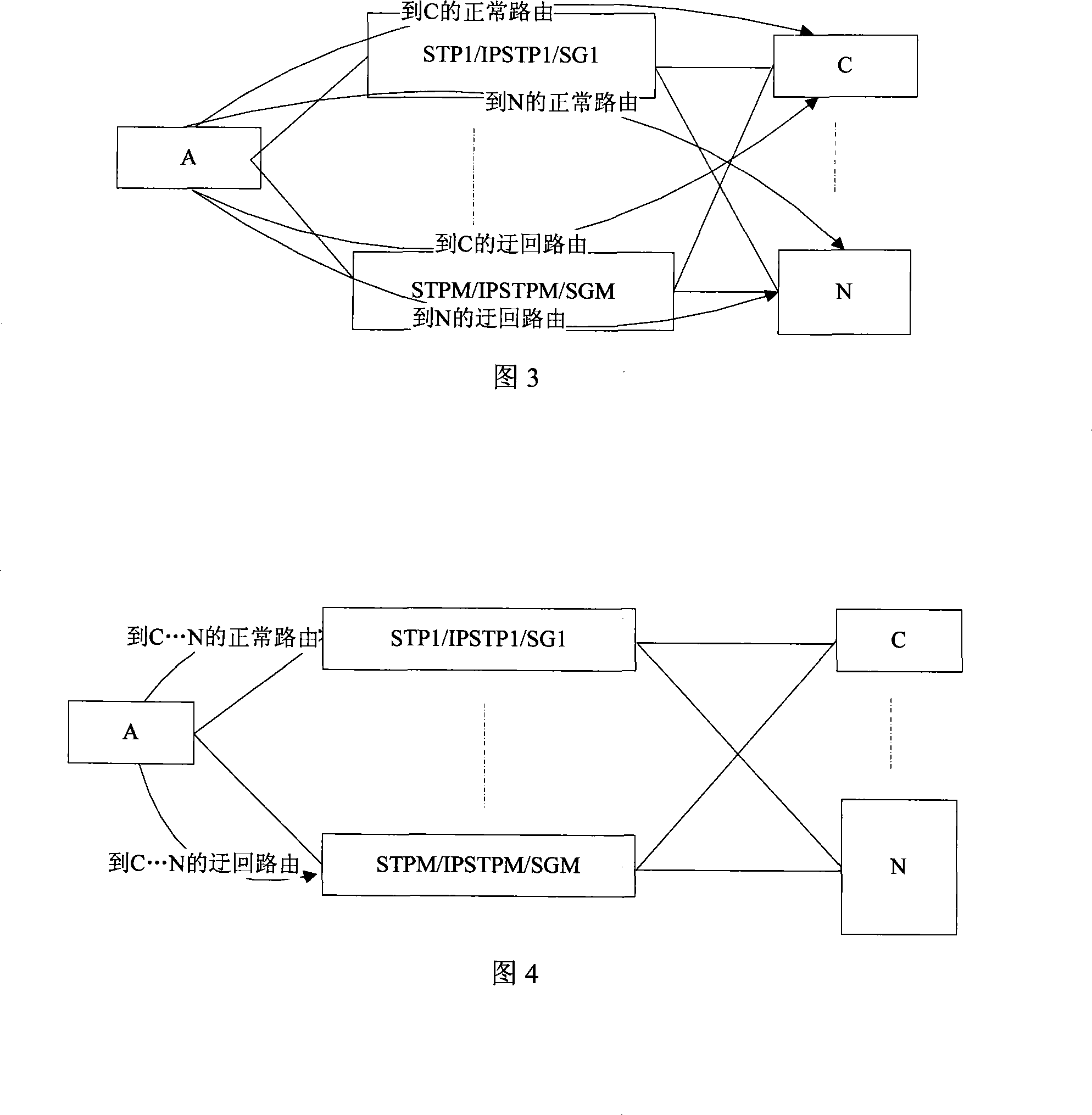Router management method of signaling network
A management method and signaling network technology, which is applied in the management field of signaling network routing in No. 7 signaling network and IP signaling network, can solve the problems of complicated routing management and increased number of routes, and achieve simplified routing maintenance process, The effect of reducing the number of updates and
Inactive Publication Date: 2008-05-07
ZTE CORP
View PDF0 Cites 2 Cited by
- Summary
- Abstract
- Description
- Claims
- Application Information
AI Technical Summary
Problems solved by technology
When there are a large number of signaling points in the signaling network and they interact with each other, it is necessary to configure normal routi
Method used
the structure of the environmentally friendly knitted fabric provided by the present invention; figure 2 Flow chart of the yarn wrapping machine for environmentally friendly knitted fabrics and storage devices; image 3 Is the parameter map of the yarn covering machine
View moreImage
Smart Image Click on the blue labels to locate them in the text.
Smart ImageViewing Examples
Examples
Experimental program
Comparison scheme
Effect test
 Login to View More
Login to View More PUM
 Login to View More
Login to View More Abstract
The invention provides a signaling network routing management method. When a large quantity of signaling points are accessed through transfer points, the signaling points in the third grade function of the signaling network are decomposed into two grades through a routing table. The first grade routing table configures the routing from the signaling points to the transfer points. The second grade routing table configures the routing from the transfer points to the signaling points which are accessed through the transfer points. The method of the invention can simplify the routing maintenance process and reduce the item renewal quantity of the routing table and the burden of the signaling network management maintenance.
Description
technical field [0001] The present invention relates to the field of communications, in particular to a method for managing signaling network routing in the No. 7 signaling network and the IP signaling network in the field of communications Background technique [0002] SS7 can be divided into four functional levels: the message transfer part (MTP) is divided into three levels, and each user part (UP) is listed in the fourth level. The signaling data link is the first-level function of the No. 7 common channel signaling system. The first-level functions define the physical, electrical and functional characteristics of the signaling data and specify the method of connection with the data link. The signaling link function is used as the second-level signaling link control, together with the first-level signaling data link, to ensure reliable signaling for transmitting signaling messages between two directly connected signaling points link. [0003] The third-level signaling...
Claims
the structure of the environmentally friendly knitted fabric provided by the present invention; figure 2 Flow chart of the yarn wrapping machine for environmentally friendly knitted fabrics and storage devices; image 3 Is the parameter map of the yarn covering machine
Login to View More Application Information
Patent Timeline
 Login to View More
Login to View More IPC IPC(8): H04L12/24H04L12/56H04Q3/00H04L45/74
Inventor 林雪峰范东明陈普然马海波
Owner ZTE CORP
Features
- Generate Ideas
- Intellectual Property
- Life Sciences
- Materials
- Tech Scout
Why Patsnap Eureka
- Unparalleled Data Quality
- Higher Quality Content
- 60% Fewer Hallucinations
Social media
Patsnap Eureka Blog
Learn More Browse by: Latest US Patents, China's latest patents, Technical Efficacy Thesaurus, Application Domain, Technology Topic, Popular Technical Reports.
© 2025 PatSnap. All rights reserved.Legal|Privacy policy|Modern Slavery Act Transparency Statement|Sitemap|About US| Contact US: help@patsnap.com


